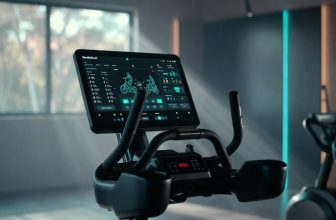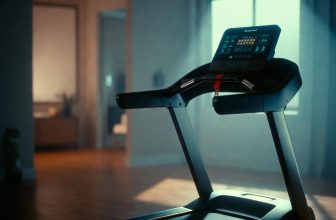Table of Contents
- Are Elliptical Machines Better Than Treadmills?
- Effectiveness for Weight Loss and Calorie Burn
- Joint Impact and Injury Risk
- Muscle Engagement and Functional Training
- Cardiovascular Benefits
- Versatility and Workout Variety
- Bone Density and Long-Term Health
- Cost, Space, and Maintenance
- FAQ
- Final Thoughts
- About Author
- Mariar Fernandez
As an Amazon Associate, I earn from qualifying purchases.
Are Elliptical Machines Better Than Treadmills?
Are Elliptical Machines Better Than Treadmills? Neither is universally better; ellipticals excel in low-impact cardio and joint protection, while treadmills lead in calorie burn, running simulation, and bone health. Choose based on goals, fitness level, and joint concerns.
Effectiveness for Weight Loss and Calorie Burn
Ellipticals and treadmills both torch calories, but treadmills edge ahead at higher intensities.
- A 155-pound person burns about 670 calories per hour running at 6 mph on a treadmill versus 600 calories on an elliptical at moderate effort, per Harvard Health Publishing.
- Treadmills allow natural running gait, engaging more muscle groups and boosting post-exercise oxygen consumption (EPOC) by up to 15% more than ellipticals, according to a 2019 study in Journal of Strength and Conditioning Research.
Bold advantage for treadmills: Higher max calorie burn (up to 800+ calories/hour for intense intervals).
Ellipticals shine in sustained sessions without fatigue.
| Activity (155 lb person, 30 min) | Calories Burned |
|---|---|
| Treadmill running (6 mph) | 335 |
| Elliptical (moderate) | 300 |
| Treadmill walking (4 mph) | 167 |
Source: Mayo Clinic
Joint Impact and Injury Risk
Ellipticals win decisively for low-impact training.
- Elliptical motion eliminates foot strike force—up to 4x body weight on treadmills during running, per American Council on Exercise (ACE).
- A 2021 meta-analysis in Sports Medicine found ellipticals reduce knee stress by 63% versus treadmill running.
“Ellipticals are the gold standard for rehab and arthritis patients,” notes Dr. Jordan Metzl, sports medicine physician at Hospital for Special Surgery.
Treadmills risk shin splints (27% of runners) and knee pain, but walking modes lower impact to near-elliptical levels.
Learn more: ACE Fitness on joint-friendly cardio.
Muscle Engagement and Functional Training
Treadmills mimic real-world running/walking, strengthening calves, hamstrings, and glutes more effectively.
- EMG studies show treadmill running activates posterior chain 20–30% more than ellipticals (University of Wisconsin, 2018).
- Ellipticals with arm poles engage upper body (biceps, triceps, shoulders)—up to 85% of total muscles when handles are used aggressively.
Pro tip: Reverse pedaling on ellipticals targets quads and shins uniquely.
Cardiovascular Benefits
Both deliver excellent heart health gains.
- A 12-week study in Medicine & Science in Sports & Exercise (2020) showed no significant difference in VO2 max improvements (8–12%) between groups using either machine 4x/week.
- Treadmills allow higher peak heart rates (up to 95% max) due to incline and speed variability.
Ellipticals maintain steady effort longer—ideal for HIIT beginners.
Versatility and Workout Variety
Treadmills offer more dynamic options:
- Speed intervals (0–12+ mph)
- Incline up to 15–40%
- Hill simulations and pre-programs
Ellipticals counter with:
- Adjustable resistance (1–25 levels)
- Stride length customization (18–22 inches on premium models)
- Forward/reverse motion
Cross-training edge: Combine both for balanced programs, as recommended by NASM.
Bone Density and Long-Term Health
Treadmills promote osteogenic loading.
- Weight-bearing exercise increases bone mineral density by 1–3% annually, per National Osteoporosis Foundation.
- Ellipticals, being non-impact, show minimal bone benefits.
Best for seniors: Treadmill walking with handrail support.
Cost, Space, and Maintenance
| Factor | Treadmill | Elliptical |
|---|---|---|
| Avg. Price | $800–$3,000 | $700–$4,000 |
| Space (sq ft) | 20–30 | 15–25 |
| Noise | High (belt/motor) | Low |
| Maintenance | Belt replacement (~3 yrs) | Flywheel lubrication |
Data averaged from Consumer Reports 2024
FAQ
Q: Are ellipticals better for bad knees?
A: Yes—zero impact reduces joint stress by over 50% vs. treadmill running.
Q: Can you get the same cardio on an elliptical as running?
A: At equal perceived effort, yes—heart rate and oxygen uptake match closely.
Q: Which burns belly fat faster?
A: Treadmills slightly due to higher intensity potential, but diet drives fat loss.
Q: Is walking on a treadmill better than elliptical for beginners?
A: Elliptical is gentler; treadmill walking builds coordination.
Final Thoughts
Ellipticals dominate for joint safety and upper-body engagement, while treadmills rule calorie torching, running prep, and bone health. Alternate both weekly for optimal results—treadmill 2–3x, elliptical 2x—to prevent overuse injuries and boredom. Consult a doctor before starting intense programs.







